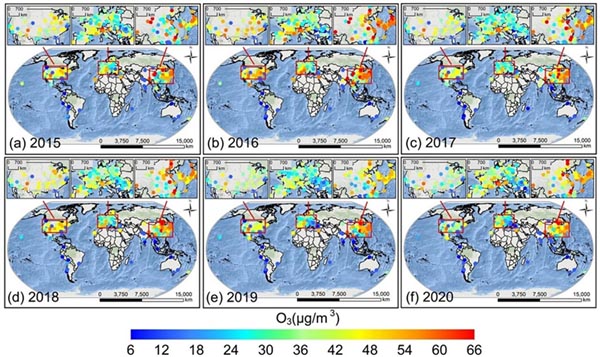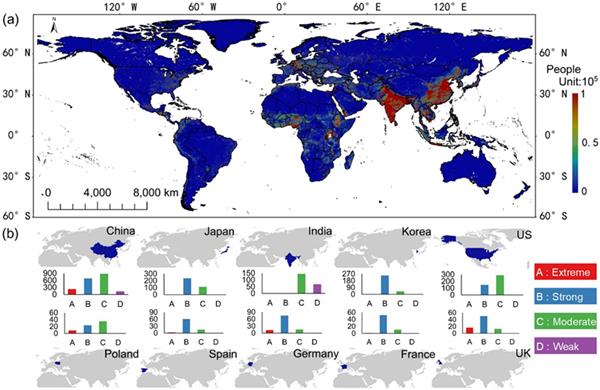(Xinjiang Institute of Ecology and Geography)Surface ozone is a greenhouse gas and air pollutant that has received much attention in recent years. Long-term exposure to ozone has serious negative effects on the human respiratory or circulatory system. Under the global warming and emission scenario RCP8.5, the correlation between acute excess mortality and ozone pollution is gradually increasing.
Therefore, exploring the change regularities and exposure risk of global surface ozone is of great significance for the implementation of strategies to reduce the negative impacts associated with ozone exposure.
Based on the generalized additive model (GAM), researchers from Xinjiang Institute of Ecology and Geography, Chinese Academy of Sciences, quantitatively evaluated the trends of globe surface ozone and population exposure in major countries worldwide from 2015-2020 in the boreal spring, and explored the main drivers of ozone from the hydro-meteorological perspective.
The results indicated that: in the boreal spring season from 2015 to 2020, the global ozone concentration exhibited an increasing trend because of the volatile organic compounds (VOCs) and NOx changes caused by human activities. Approximately 31.73 million people in the 10 major countries analyzed reside in rapidly increasing ozone concentrations. Thus, the continuous increase of ozone concentration worldwide is an important factor leading to increasing threats to human health.
Researchers also found that mean wind speed, maximum temperature, and relative humidity are the main factors that determine the change of ozone concentration. In addition, the formation of ozone precursors can also be monitored in surface water and groundwater, and the evaporation of precursors is likely to have an effect on surface ozone concentrations as well.
The related results were published in Exposure and Health, entitled "Exposure Risk of Global Surface O3 During the Boreal Spring Season".
Article link: https://link.springer.com/article/10.1007/s12403-022-00463-7#Sec17

Fig.1 Spatiotemporal patterns of global annual ozone concentrations in the boreal spring season from 2015 to 2020.

Fig. 2 Distribution of the global population and number of exposed populations at different levels in 10 key countries. a World population distribution map; and b histograms of population numbers at different levels (weak, moderate, strong, and extreme) in the 10 key countries.
